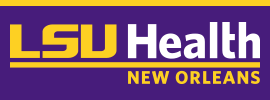Event Website
https://publichealth.lsuhsc.edu/honorsday/2022/
Start Date
2-4-2024 9:00 AM
Description
Objective: To illustrate the breadth of data collected by cancer surveillance programs and how the data can be used in public health research and program development. Abstract: Surveillance programs are essential elements of many different subspecialties of epidemiology and public health. One specialized type of program, cancer registries, collects data on all cancer cases diagnosed within a specific population. In the United States, each state has a population-based cancer registry to which healthcare providers report new cases of cancer diagnosed in the population served. While these data are extensive and can be utilized to support cancer research, control, and prevention, these data are often misunderstood and misused. The complex work done by cancer registries is vital to understanding the distribution and occurrence of cancer, however, there are limitations to how it can be utilized and applied. State cancer registries, such as the Louisiana Tumor Registry, collect hundreds of data points on each cancer case, which allows for the compilation of statistics, such as cancer incidence, mortality, and survival. These statistics can then be stratified by demographic information and cancer-specific data points, such as morphology, stage, and treatment received. We can then examine, for example, the distribution of disease geographically, the disparities among varying demographics, and treatment patters in rural and urban areas, which can guide public health programing by allowing for allocation of limited resources to assist underserved populations. Though these data are complex, there are still limitations to how these data can be utilized. One such limitation is that cancer registries do not collect exposure data or individual risk factors, thus the etiology of the disease cannot be determined using cancer registry data alone. It is important to understand the strengths and weaknesses of cancer registry data, so that they can be applied and interpreted appropriately.
Recommended Citation
Kinchen, James W.; Maniscalco, Lauren; and Ritter, Mary, "Cancer Surveillance Program Data as a Vital Tool for Public Health Practitioners" (2024). School of Public Health Delta Omega Honors Day Poster Sessions. 3.
https://digitalscholar.lsuhsc.edu/dohd/2022/2022/3
Cancer Surveillance Program Data as a Vital Tool for Public Health Practitioners
Objective: To illustrate the breadth of data collected by cancer surveillance programs and how the data can be used in public health research and program development. Abstract: Surveillance programs are essential elements of many different subspecialties of epidemiology and public health. One specialized type of program, cancer registries, collects data on all cancer cases diagnosed within a specific population. In the United States, each state has a population-based cancer registry to which healthcare providers report new cases of cancer diagnosed in the population served. While these data are extensive and can be utilized to support cancer research, control, and prevention, these data are often misunderstood and misused. The complex work done by cancer registries is vital to understanding the distribution and occurrence of cancer, however, there are limitations to how it can be utilized and applied. State cancer registries, such as the Louisiana Tumor Registry, collect hundreds of data points on each cancer case, which allows for the compilation of statistics, such as cancer incidence, mortality, and survival. These statistics can then be stratified by demographic information and cancer-specific data points, such as morphology, stage, and treatment received. We can then examine, for example, the distribution of disease geographically, the disparities among varying demographics, and treatment patters in rural and urban areas, which can guide public health programing by allowing for allocation of limited resources to assist underserved populations. Though these data are complex, there are still limitations to how these data can be utilized. One such limitation is that cancer registries do not collect exposure data or individual risk factors, thus the etiology of the disease cannot be determined using cancer registry data alone. It is important to understand the strengths and weaknesses of cancer registry data, so that they can be applied and interpreted appropriately.
https://digitalscholar.lsuhsc.edu/dohd/2022/2022/3

